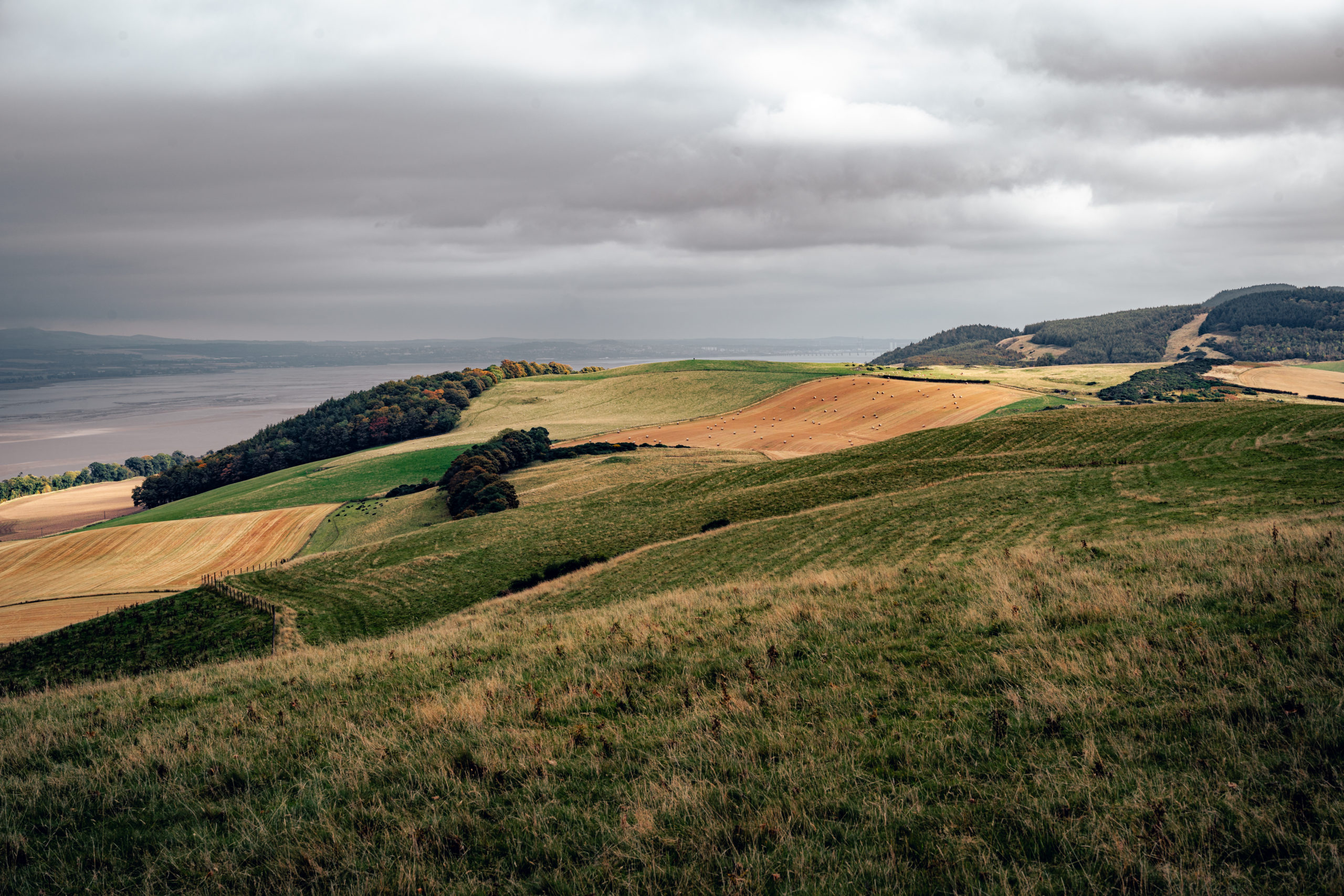Over the past 10 years, we have worked incredibly hard to be a positive example of how agricultural practices can coexist with environmental sustainability. By integrating nature friendly farming methods, we strive to do our best to increase the health of our farm ecosystem but also contribute to the conservation of endangered species and the reduction of our carbon footprint.
Creating Wildlife Corridors Through Native Hedging
One of our most significant achievements in the past decade has been the planting of over 3.2km (3250m) of native hedging. These hedgerows serve as vital wildlife corridors linking various habitats across the farm.
These hedgerows provide excellent shelter for wildlife. They act as highways allowing animals to safely move between habitats and offer food/shelter for birds, insects, and small mammals. By stabilising soil and preventing erosion. These channels also play a key role in preserving the soil health. The hedgerows are also carbon stores which contribute to climate change mitigation by capturing and storing carbon.
A Safe Haven for Wild Birds
Every year, we plant over 10 acres of wild bird cover, providing shelter and food for birds – especially in the winter months. These crops offer abundant food for a variety of birds and insects, even attracting grey partridge – a species listed as red on the conservation status.
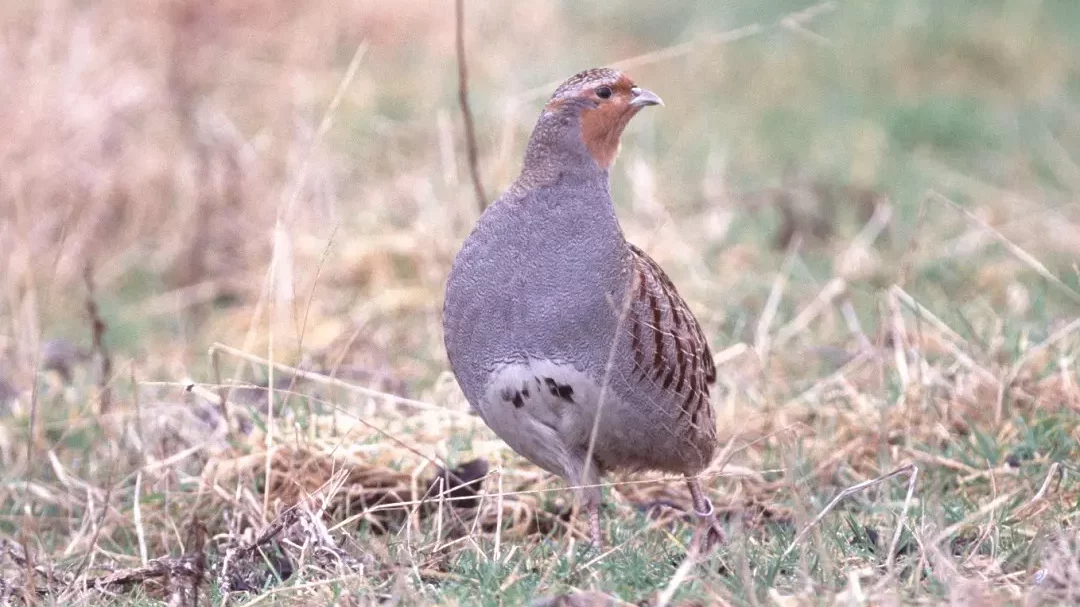
Over-Winter Stubbles and Cover Cropping
Here at Lindores, we follow the farming practice of over-wintering stubbles. This is when the crop residue is left (such as stubble) in the field after harvest during the winter months instead of ploughing or removing it. After crops are harvested, the remaining stalks, stems and other plant material are left standing on the soil’s surface.
The leftover seeds and plant material in the stubble act as a food source for birds and small mammals during the colder months when food can be scarce. Leaving stubble on the ground can also help protect the soil from erosion caused by wind and water. The plant material acts as a natural barrier, reducing the impact of weathering elements on the soil surface.
The decaying plant matter contributes organic matter to the soil, which can improve soil structure and provide nutrients for future crops. As the plant material decomposes, it can help sequester carbon, reducing the overall carbon footprint of the farm.
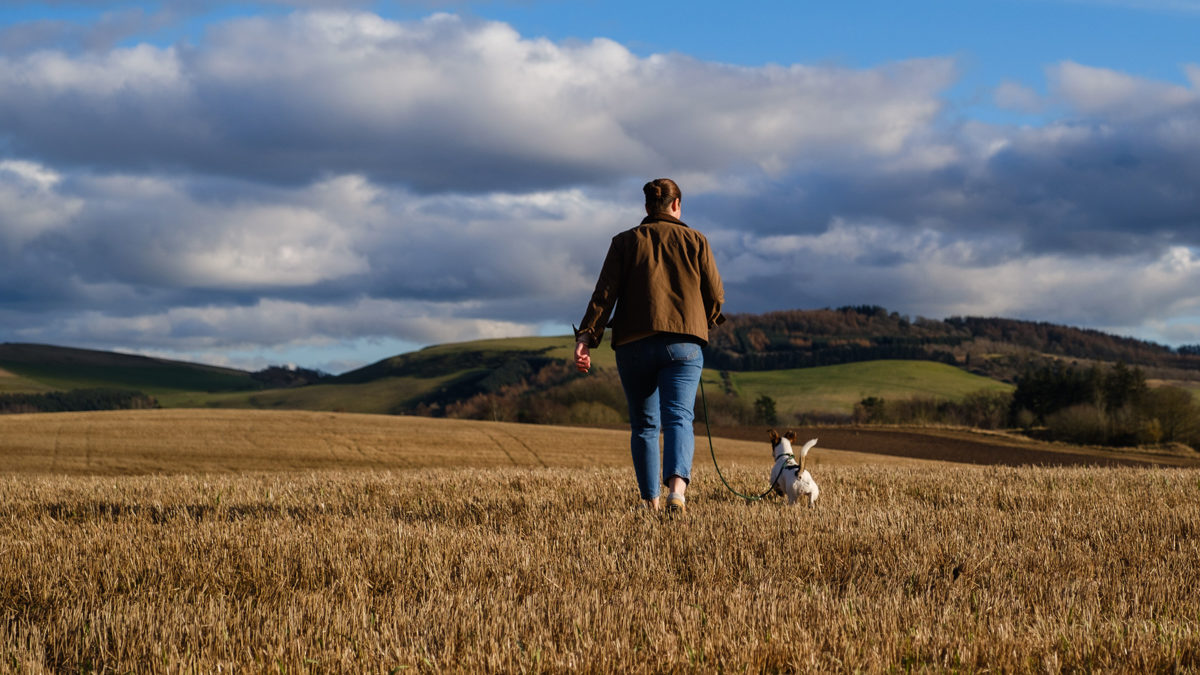
Following this process, we will have a year of cover cropping. What is planted in the fields is not typically used for harvest but instead provides various environmental and agronomic benefits. Our cover crop includes Phacelia, Sunflowers, Crimson Clover and Vetch.
- Phacelia is a beneficial plant that attracts pollinators and improves the soil health by enhancing structure and adding organic matter.
- Sunflowers are wonderful for attracting pollinators like bees. They can also act as a natural weed suppressant and produce seeds that can be used for wildlife feed or oil production.
- Crimson Clover offers numerous benefits, such as fixing nitrogen in the soil and improving soil fertility. It acts as a great cover crop to help combat soil erosion.
- Vetch provides valuable forage for livestock and habitats for pollinators.
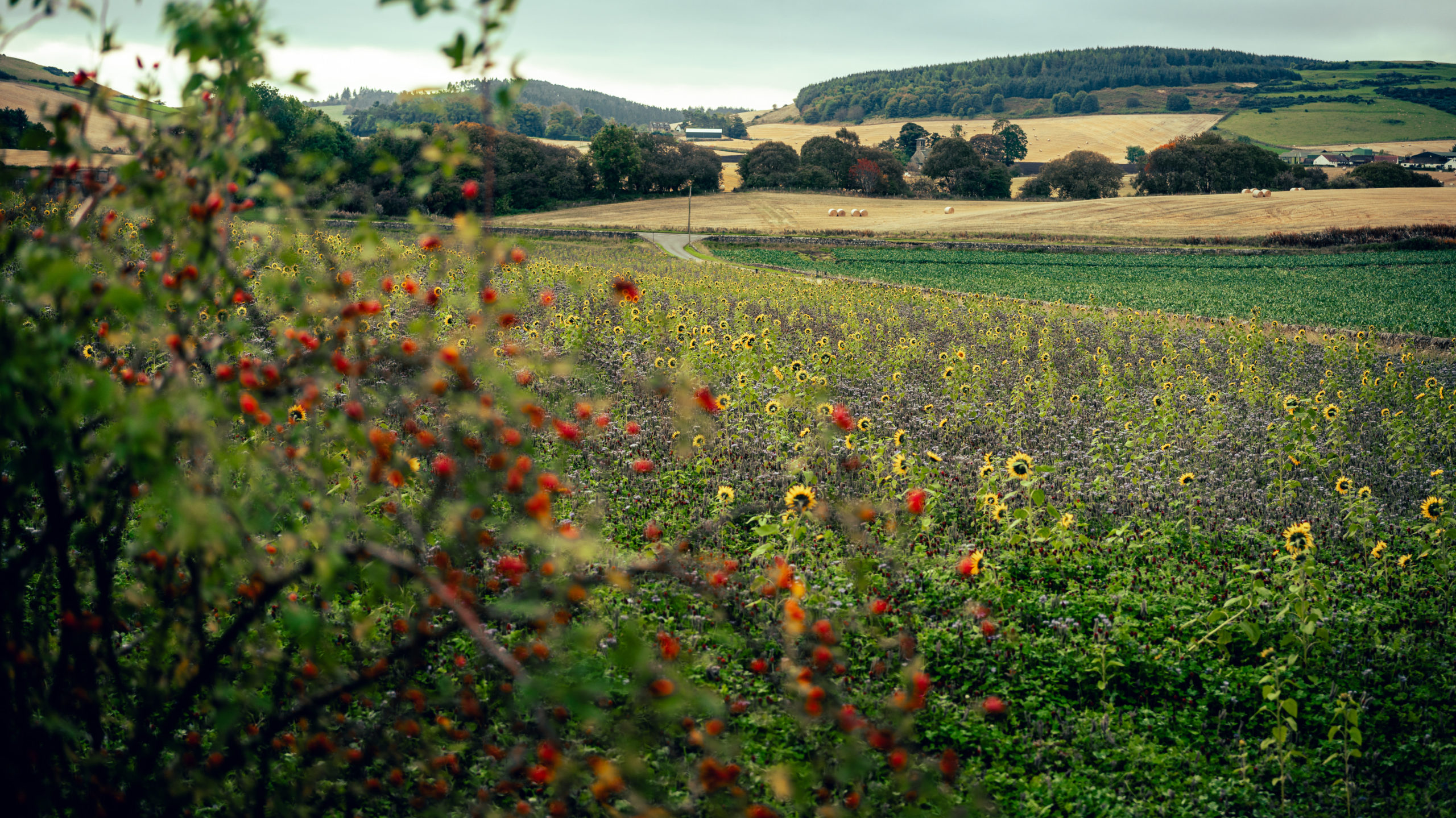
Field and Water Margins
With over 2km of field margins on the farm, this has created an invaluable haven for wildlife in an arable setting. These areas provide shelter for small mammals and insects and have a particularly beneficial effect on the conservation of the red-listed grey partridge.
New Pond Habitats
Richard has taken an active role in creating and maintaining two new pond habitats which are important for both wildlife and flood mitigation. These newly established ponds offer aquatic habitats for various species and help regulate water flow during heavy rains – reducing flood risk.
Creating Wader Habitats for Endangered Birds
In addition to the hedging, bird cover and water features – we have also created wader scrapes and wader-grazed grasslands. These habitats are tailored to support wading bird species that have been in decline in recent decades. By creating these spaces, it has helped to provide safe nesting sites and feeding areas for these vulnerable species.
Forestry
Throughout the past decade, we have planted 30 acres of commercial woodland. Over the years, old crop has been harvested and replaced with a mix of more diverse trees which will provide a more nature friendly, resilient woodland. In the winter of 2025 we planted 10,000 trees:
- 1900 Native Broadleaves – including 400 Silver Birch, 300 Downy Birch, 300 Alder, 600 Rowan, 150 Sessile Oak and 150 Gean
- Conifers – 2600 Norway Spruce, 1100 Sitka Spruce and 1100 Scots Pine
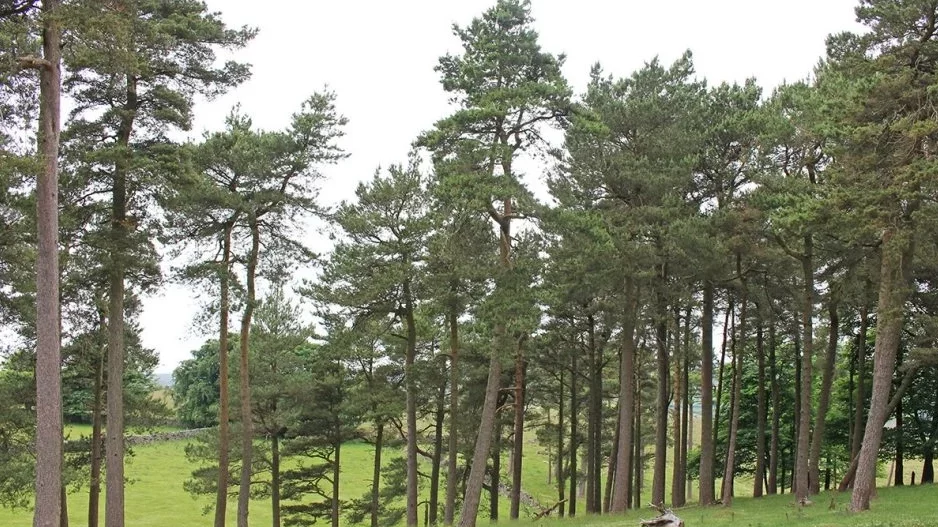
Soil Conservation
Richard takes a scientific approach to soil management by carrying out soil testing and applying targeted practices to improve the soil health. This ensures that nutrient applications are optimised and tailored to specific needs across the farm, reducing waste and enhancing soil fertility.
Circular Farming Approach
At Lindores, we embrace the principles of circular farming – creating a sustainable, self-sufficient farming system that minimises waste and maximises the use of resources. We grow barley on our farm which is used in the production of Lindores Abbey Whisky, a key part of our agricultural output. After the barley is malted, the by-product – draff, is returned to the farm to feed our cows – completing a vital loop in our farming cycle.
Our livestock are primarily fed on the grain we grow and their manure is returned to the soil – enriching it with organic matter and nutrients for future crops. In addition, we use our own hay and straw to feed and bed our animals, ensuring that no resources go to waste.
Our approach to sheep farming has also been optimised by reducing inputs, focusing on breeds that are well-suited to thriving on grass alone. This practice further enhances the sustainability of our farm.
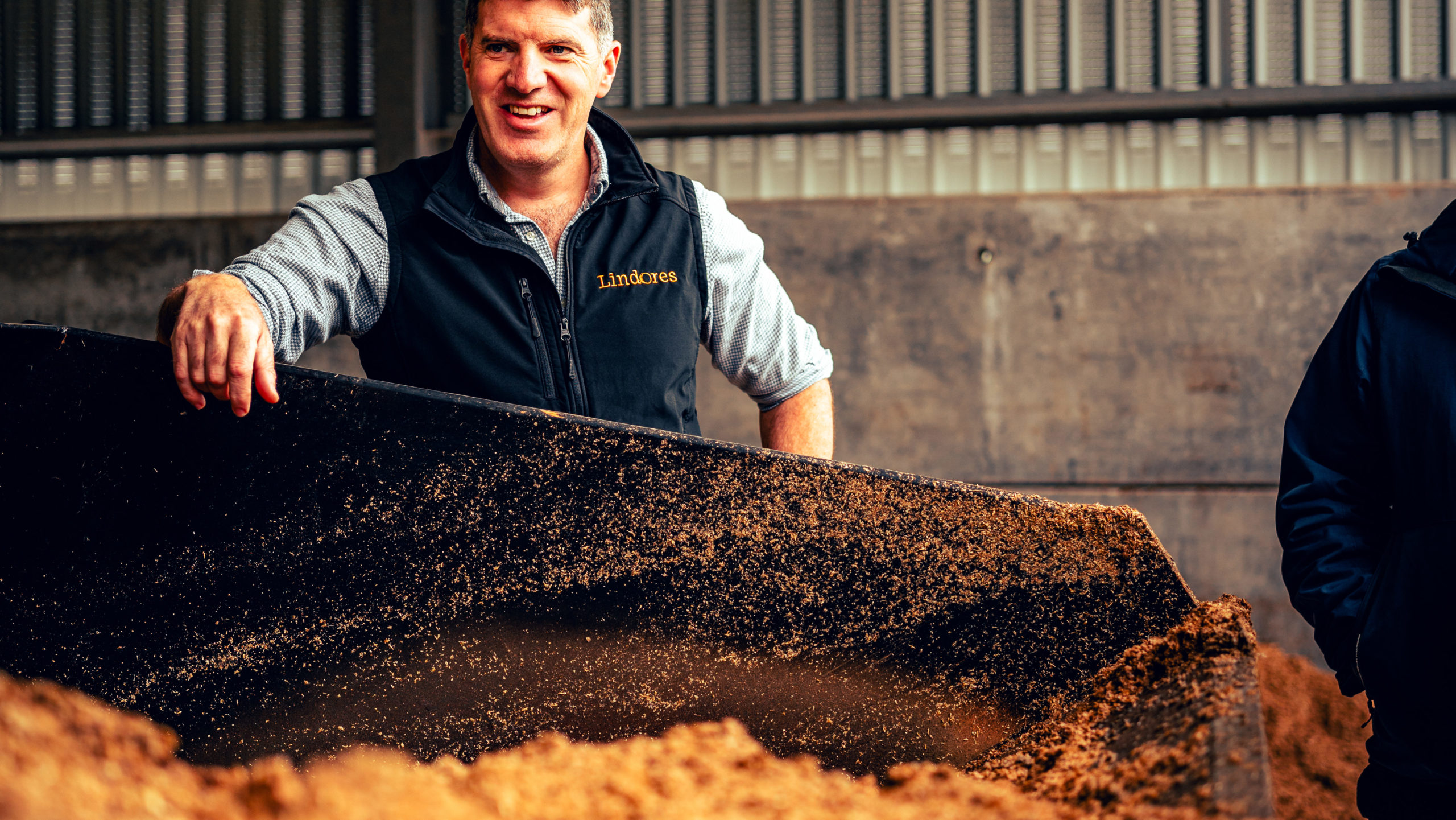
Track and Gateway Upgrades
To minimise soil erosion and enhance farm infrastructure, we have invested in track upgrades and hard standings at gateways and drinking points for livestock. This prevents the degradation of the soil in high-traffic areas and supports long-term land health.
Carbon Audits and Environmental Assessments
As part of our ongoing commitment to sustainability, we are preparing to undertake a carbon audit which will help us to further reduce our carbon footprint. In addition to this, we regularly carry out Farm Environment Assessments, Diffuse Pollution Risk Assessments and Steading Drainage Risk Assessments to ensure we are operating in an environmentally responsible way.
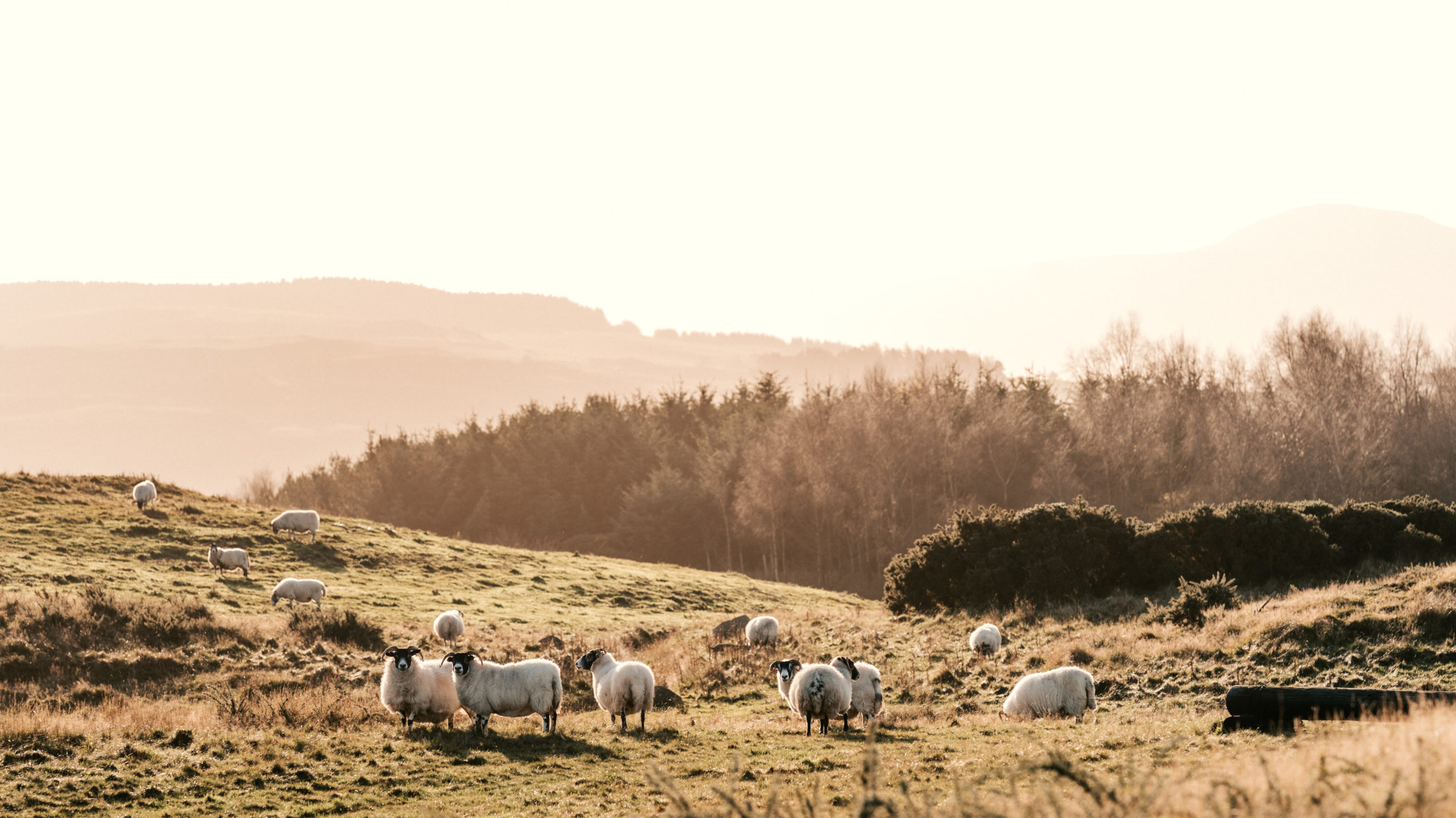
The sustainable practices we have adopted at Lindores have made a significant impact over the past decade. Always learning and adapting, the team are trying to showcase that sustainable farming can support biodiversity while also benefiting the farm’s productivity. We are determined to maintain a balance between agricultural production and environmental responsibility, ultimately safeguarding the farm for generations to come.

